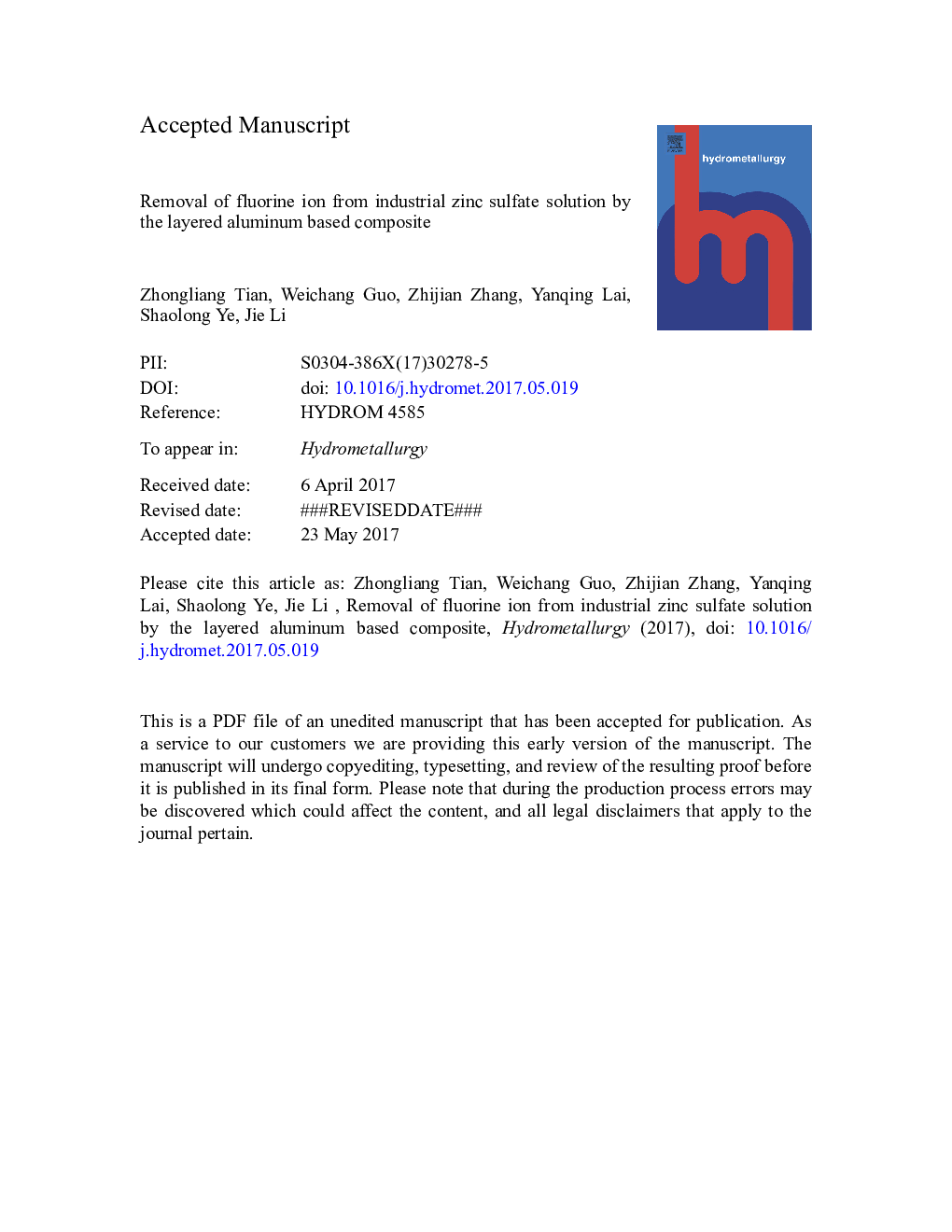| Article ID | Journal | Published Year | Pages | File Type |
|---|---|---|---|---|
| 4769281 | Hydrometallurgy | 2017 | 19 Pages |
Abstract
The layered aluminum-based composite which was synthesized by co-precipitation followed by calcining the precursor at 450 °C under N2 atmosphere has been used to remove fluorine ion from industrial zinc sulfate solution. The composite was characterized by X-ray diffraction (XRD), scanning electron microscope (SEM) and BET specific surface area analysis. The effect of adsorption temperature, dosage of absorbent, contact time and the adsorption kinetics were investigated. The kinetics data suggests that the process of adsorption could be described by the pseudo-second-order kinetic model. The adsorption isotherm fits the Langmuir isotherm model well and the theoretical maximum adsorption capacity was 5.62 mg/g. Furthermore, the adsorption mechanism was studied by Energy dispersive analysis of X-ray (EDX) and Fourier transform infrared spectroscopy (FTIR). The result shows that the distribution of F element is associated with Al element after adsorption and the hydroxyl could exchange with fluorine ion, revealing an ion exchange mechanism. The regeneration study shows that the adsorbent could be reused by a simple method of Alkali washing followed by pickling.
Related Topics
Physical Sciences and Engineering
Chemical Engineering
Chemical Engineering (General)
Authors
Zhongliang Tian, Weichang Guo, Zhijian Zhang, Yanqing Lai, Shaolong Ye, Jie Li,
